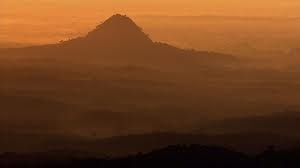In the summer monsoon season of late November to mid-March, the rain clouds ride the trade winds of the Indian Ocean west into Mozambique. Crossing the coast, they refresh the miombo woodlands of the Cheringoma Plateau, then the savanna and floodplain grasslands of the Great Rift Valley. Finally they run aground on the slopes of Mount Gorongosa, where they release great torrents of rain, like a benediction.
The Gorongosa massif, which reaches a height of 6,112 feet, captures more than six feet of rainfall a year. That is enough to support a lush rain forest on the summit—and to the east, in the Rift Valley, a park that was once one of the richest wildlife refuges in the world. Before Mozambique’s civil war ravaged it, Gorongosa National Park was roamed by elephants, African buffalo, hippopotamuses, lions, warthogs, and more than a dozen species of antelope. Now some of those animals are coming back, thanks largely to Greg Carr, an American businessman and philanthropist who is leading a project to restore Gorongosa. In 2010 the park marked a milestone: Mozambique’s government fixed an error made at its creation, expanding its boundaries to include Mount Gorongosa, source of its life-sustaining rivers.
In the summer of 2011, I went to Gorongosa to support Carr’s efforts and also to work on my new digital textbook for high school biology. The park is an excellent place to convey the high stakes and the excitement of doing wildlife biology today. The summit rain forest on Mount Gorongosa, about 29 square miles in extent, is an ecological island in a sea of savanna and grassland. It is hard to get to, and so it has remained largely unexplored by biologists. Ants, my own specialty, were entirely a blank on the map when I arrived. For a naturalist there is no more powerful magnet than an unexplored island. When I visited Mount Gorongosa, on my first trip to Africa, I felt highly charged with the prospect of surprise and discovery.

